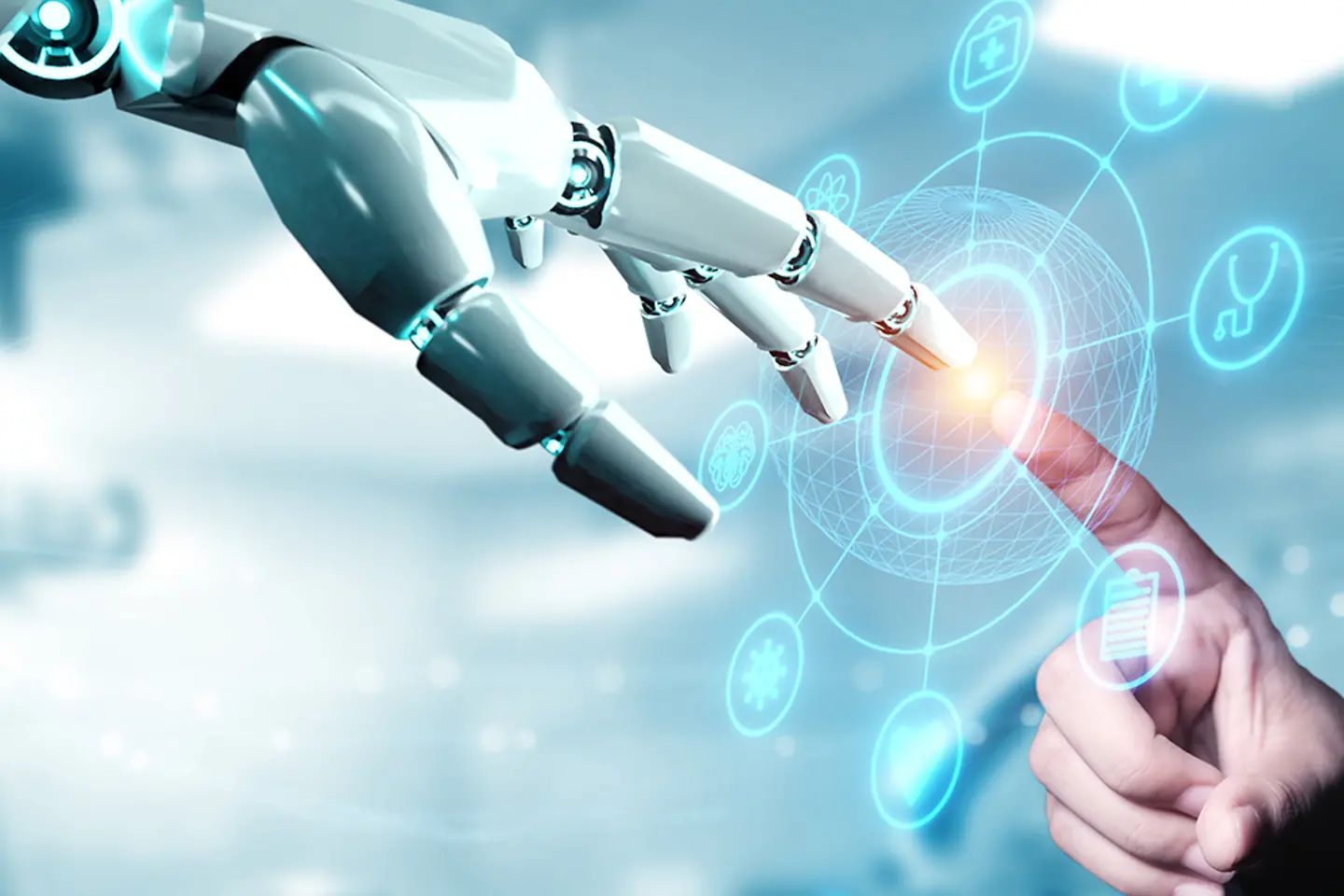
Almost all companies are currently considering how they can use AI profitably and keep pace with development. After all, tech companies are upping the ante on an almost daily basis: the Stanford Index1 counts 149 new AI models in the past year alone. The question for companies is how they can use AI to take the digitalization of their business processes to a new level.
There is little doubt in boardrooms that generative artificial intelligence (GenAI) will make a difference in the future. This is not just my personal impression, but also an outcome of studies such as the survey conducted by tech company Glean among IT managers from the United States and Europe2. According to the study, large companies with sales of more than five billion dollars in particular want to invest more than 10 percent of their IT budgets in GenAI projects by 2025. Small and medium-sized companies will follow suit because they can work more productively with AI. The hype surrounding GenAI will boost the topic of hyperautomation. After all, this is where the potential of AI is particularly evident.
I have already described in a previous article how companies can use hyperautomation to combine the strengths of various automation tools and other advanced technologies and thus make even better use of them. If you were now to ask me whether your company should actually rely on hyperautomation when you have long since successfully automated recurring processes with robotic process automation (RPA), then my answer is: absolutely. That’s because with hyperautomation, you can get even complex processes under control automatically. Hyperautomation is not a technology; it is a holistic and tool-agnostic approach that combines technologies such as business process modeling (BPM), RPA, and AI. In hyperautomation, AI works like the brain and leverages further automation potential. RPA is the executing arm that fulfills the tasks assigned to it.
This means the “low-hanging fruits” have been harvested, and simple, recurring processes run without human intervention. However, RPA struggles somewhat with complex business processes. But with the integration of AI and the combination of various hyperautomation tools, companies can open up a new chapter in automation and get a handle on more complex decision-making processes. The ability of AI to recognize patterns and learn from data creates greater efficiency and precision. This enables companies to not only further increase their productivity, but to also develop innovative solutions for challenges that exceed the previous automation limits. RPA remains the core of automation, but is being taken to a new level with AI. The term hyperautomation expresses this well. If you want to maintain an end-to-end overview of your processes and orchestrate your processes holistically, you can combine BPM with RPA. RPA automates repetitive processes that occur very frequently and can also automate sub-processes that still have to be carried out manually at present.
RPA specializes in processing structured data. The technology automatically performs rule-based tasks by executing predefined steps. In combination with AI, unstructured data – such as emails, videos, or images – can now also be processed. AI analyzes and interprets the data, recognizes patterns, and can establish correlations and make decisions on this basis. It extracts relevant information from emails and can categorize it. The application therefore recognizes whether a customer is simply stating their new IBAN, wants to change a password, or is providing notice of termination. In this way, customer contact centers can be fully automated. Work items can be pre-sorted and assigned to the correct processor.

As you can see, the roles are clearly distributed in the hyperautomation approach. AI provides the right information with its intelligence, while RPA is the executing body and implements automation based on the AI analysis. RPA and AI are picking up pace together. Hyperautomation can now handle even complex processes such as sentiment analysis for customer letters, for which companies previously had to set up entire rulesets. Once AI has analyzed the mood of a customer, customer service can initiate a callback to angry customers. This gives customer service employees the chance to quickly smooth things over.
According to Bitkom, 149,000 IT vacancies remained unfilled in German companies last year3. Hyperautomation alleviates the pressure on companies. It means that even experts with little or no development skills can use automation tools. At T-Systems, we empower our customers to take action themselves. Thanks to our partnership with UiPath and the Citizen Developer concept, for example. The low-code/no-code approach allows employees to automate simple processes independently, while we support them within a secure framework. We empower our customers to drive their own digitalization. Thanks to low-code development, they can achieve rapid success.
Under the motto “Build your own bot”, T-Systems is helping a customer in the public sector to enable its employees to automate their manual tasks independently. The goal is for specialists to develop their own automation solutions that might help them in their day-to-day work. In this way, employees drive digitalization in the company and can implement minor use cases, even if they only promise a low return on investment. When it comes to complex end-to-end automation, our Center of Excellence takes over and coordinates.
T-Systems, for example, has entered into strategic partnerships with leading companies such as UiPath, Pega, ServiceNow, and Mendix so that we can provide our customers with the best possible advice. Our partners are among the market leaders in their fields. From discussions with analysts, we know that UiPath is a leader in RPA; Pega has particularly extensive expertise in business process management. Their wide range of directly applicable AI tools pays off for many companies.
Tim Höttges, our CEO at Deutsche Telekom, and T-Systems CEO Ferri Abolhassan repeatedly emphasize that AI is not only a strategically important topic for companies but an existential one. For our society, for our economy, for every single company.
Frederick Peters, Tribe Lead RPA in the Digital Enabler Team, T-Systems International GmbH
AI is an existential topic for our society, for our economy, and for every single company. However, this also means that companies must now consistently invest in AI. Not only in technology, but also in the further qualification of their employees. There is great interest in this. At Deutsche Telekom alone, more than 88,000 employees have already taken advantage of our AI learning opportunities. And that’s a good thing. Only those who are familiar with the topic can contribute to the vision of human-friendly automation. This gives them the opportunity to help shape new processes and discover innovative new fields of work. If you would like to talk to me about hyperautomation, please write to me, or we can also meet in person.
1 The AI Index Report 2024, Stanford University, 2024, aiindex.stanford.edu
2 Companies are investing more and more in AI, Holger Schmidt, February 2, 2024, FAZ, Frankfurt/M, faz.net
3 Record shortage of skilled workers: 149,000 IT jobs are unfilled in Germany, Bitkom, 2023, bitkom.org